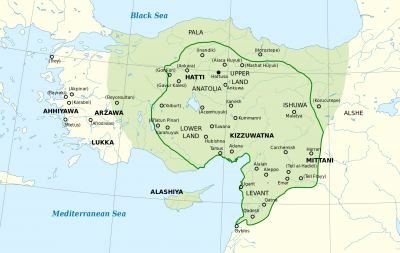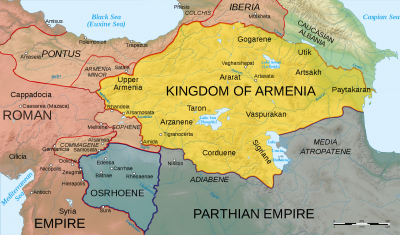Kemah is located in the northern foothills of the steep and rugged Munzur Mountains, north of the Taurian Mountain Belt. The region is largely hilly, but in places mountainous to rugged. More extensive flat land is almost non-existent. The Karadağ, the Çölen Dağı, the Köhnem Dağı (3045 m) and the Vank Mountains rise in the north of the county.
In 1915, Kemah (Karasu) Gorge near the administrative seat of Kemah was one of the places of mass extermination of Armenians. Between 10-14 June 1915, 25,000 Armenians were killed within four days and the victims were thrown into the river over the steep cliffs of the Karasu Gorge near Kemah.[1]
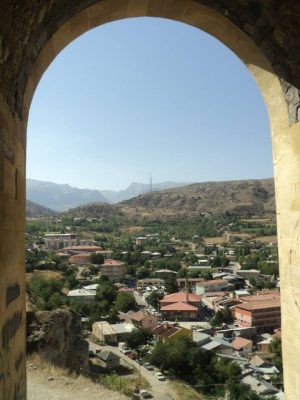
Toponym
According to the Swiss scholar Emil Forrer and Gr. Ghapantsyan, actual founder of Hittitology in the Soviet Armenia, the toponym derives from Kum(m)akha (Gamakha, Gumakha), the capital of Hayasa, often mentioned in Hittite inscriptions.[2] Others believe that it has something to do with the word skeleton, meaning that in ancient times the royal tombs of the Arshakuni kings were located there, and some explain the toponym Kamakh with the many aspen trees in the area.
Ani-Kamakh is already mentioned as Kamakh in written sources of the 12th and 13 centuries. Today’s common name Kemah is a derivative of the Greek word Κάμαχα. In Greek sources (813) the place is called Kamakhon or Theodosióupolis and in Armenian (474) Gamakh (Կամախ) or Ani.
Administration
Immediately with the Ottoman rule, Kemah acquired the function of a sancak center. With the reign of Süleyman the Magnificent (Süleyman I, 1520 to 1566), Kemah was sancak in the Vilayet Diyarbekir, but later passed to Erzurum province and ultimately remained under Ottoman rule as a kaza and county seat in Erzincan province.
Population
At the end of the 19th century, kaza Kemah had 7 sub-districts and 75 villages with a population of 18,872 inhabitants. It was known for its agriculture and soil products. Coal was mined in this kaza. The local handicraft products were carpets, prayer rugs, socks and gloves.
On the eve of the First World War there lived 6,396 Armenians in 15 localities of the kaza of Kemah, maintaining 37 churches, 6 monasteries, and 13 schools with an enrolment of 802 pupils.[3]
History
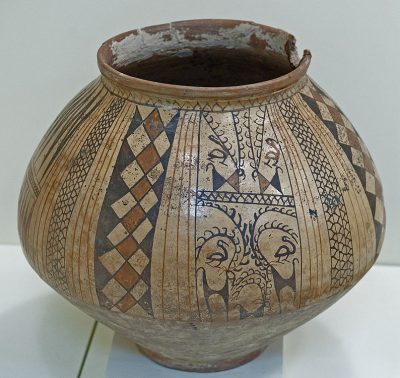
Historical studies emphasize that the history of the region may date back to the Paleolithic period. Moreover, archaeological findings at the excavations in the Erzincan Plain in the east and near Erzurum show that the regional history dates back to 4000-3000 B.C. According to Assyrian and Hittite cuneiform texts, Kemah is one of the small feudal principalities established in eastern Anatolia in the 2000s B.C. In the 15th century B.C., Hittite sources mention Kuma(k)ha, which may be identical with Kemah. There it is said that the Hittites made expeditions via Hayasa, a Late Bronze Age country in northeastern Anatolia, to the castle of Kemah and that Šuppiluliuma I and Karannish, king of the Late Bronze Age country of Hayasa, fought in the region of Kuma(k)ha (Kemah). Kemah apparently played a key role in early antiquity due to its geostrategic location. Accordingly, the settlement of Kemah may have begun at least 4000 years ago. According to the sources, after Hayasa the Urartians, Scythians and Cimmerians, Medes, Persians, Parthians (Iranians) and Romans settled in or around Kemah until the Byzantine period.
The Armenian historian Moses of Khoren (Movses Khorenatsi) reports
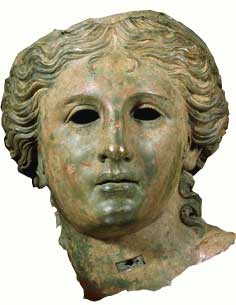
that Kemah was endowed with statues of gods during the time of Artaxiad king Artashes (Artaxias I, also Artaxes, Artašēs, 190-160 B.C.) and that his son Tigran commissioned the statue of goddess Anahit from Greek sculptors and had it placed in the temple in this city. Many of the kings of the Armenian Arshakuni dynasty were buried in this city in the 3rd and 4th centuries A.D.
After the disintegration of the Roman Empire, Kemah was one of the most important border fortresses in the area of tension of the Byzantine-Arab border mark (Thughur) between the Christian East (Byzantium) and the Arab-Islamic neighbors until the 10th century A.D. Between 379 and 678 Kemah remained under the rule of the Byzantines.
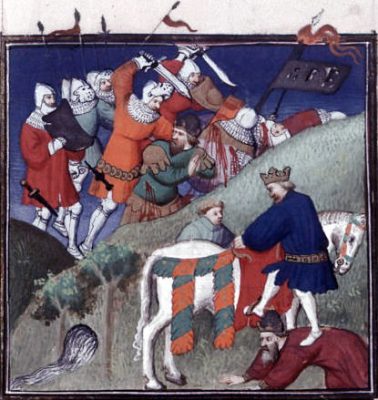
The first Arab attack on the Kemah region under Habib ibn Maslama al-Fihri was a failure for the Arabs. In the third attack in 678/679, Kemah was conquered by the Umayyad general Umayr bin al-Hubab al-Sulami, and then often alternated between Byzantines and Islamic caliphs. Only after 846 the place remained under the rule of the Byzantines until the Battle of Man(t)zikert (Malazgirt) in 1071. At that time, the first decisive Turkish incursions with raids had already taken place in 1057/58.
After the Battle of Man(t)zikert in 1071, Sultan Alp Arslan sent commanders to various parts of central and eastern Anatolia following his victory over the Byzantines, including orders to conquer the region of Erzincan, Kemah and Şarkıkarahisar (Şebinkarahisar). In gratitude for the conquest, the successful commander Mengücek Gâzi received the region of Erzincan and Kemah as İkta, a form of military fief. Subsequently, Emir Ahmet Mengücek established the Principality of Mengücek (1072-1114) and made Kemah the center due to its protected and solid castle. The Mengücek beylik existed until 1228. Under the Mengücek rulers, and especially under Fahrettin Bahram Shah, who ruled between 1165 and 1225 and was the son-in-law of Seljuk Sultan Kılıç Arslan II, Kemah experienced economic and cultural prosperity. Both the fortified castle and its location at the crossroads of trade routes played an important role. It is believed that Kemah fell into the hands of the Dânishmenden for a short time after the death of İshak Bey, who replaced Mengücak Gazi, in 1142. In the meantime, one branch of the principality, divided into two, ruled Erzincan and the other ruled Divriği. Kemah was subordinated to the Erzincan branch of the principality.
After the Ottoman Sultan Yavuz Selim‘s victory over Shah İsmail in the Battle of Çaldiran, Akbıyıklı Mehmet Pasha, on the Sultan’s instructions, besieged and captured Kemah Castle in May 1515, which had been seized by a rebel group terrorizing the surrounding area. As a result, Yavuz Sultan Selim personally joined the siege and added Kemah to the Ottoman lands on 15 May 1515. After that, the city was part of the Ottoman winter quarters from where the conquering soldiers participated during the Ottoman campaigns against Iran.
Destruction
“In early June [1915], the 15 Armenian towns and villages in the kaza of Kemah (…) were (…) attacked by squadrons of approximately 200 çetes [irregulars], under the command of Armedanlı İsmail, Erzincanlı Kasab [‘butcher’] Memduh, Ziya Hasan Çavuşoğlu, and Boyağlı Sefer, who had also taken part in the massacres in Tercan, Kiğı, and Erzincan. The victims were massacred where they were found. A few young Armenian men nevertheless managed to cross the çetes’ lines and flee to Dersim, as did 200 women from the little town of Kemah.”[4]
Kemah/Gamakh Town
Located on the left bank of the Western Euphrates, on its Tanadzor tributary.
Population
In 1516, a total of 2,591 people lived in the town. Of these, 68.5% (1,769) were Muslims and 31.5% (812) were Christians. In the historical register books of 1520 and 1530 it was noted that outside the castle there were four quarters with 239 families: the Cami, Ahi Ferec, Rumbacı and Orta quarters. Muslims lived in the first two quarters, and Christians in the others. By 1568 and 1591, their number had decreased to three, and the Orta quarter no longer appears in records – possibly due to a merger with the Rumbacı quarter after 1530. In addition, there were over 1,000 Janissaries and garrison soldiers in the castle. The presence of 1,146 soldiers in Kemah in 1520 shows the military importance for the development of the settlement.
By 1530, the population had increased to 3697 – about 1900 of them were Muslims, the rest Christians – but decreased to 3,042 by 1568 and to 2,556 by 1591.
At the beginning of the 20th century Kemah’s population reached 15,000, about half of whom were Armenians. According to other sources, as of 1914, the town had 7,000 inhabitants, 3,000 of whom were Armenians.[5]
Notable Armenians
- Grigor Daranaghtsi (c. 1576-1643): clergyman, historian, chronicler
History
Ani-Kamakh was first known in Armenian history as one of the famous fortresses of the kings of the Artaxiad and Arshakuni dynasties. Some of their royal treasures were kept here. The tombs of Arshakuni kings were located in Ani-Kamakh. The treasury of Ani-Kamakh was looted in 369 by Persian troops led by Shapuh II. During that invasion of Armenia, the pantheon of the Arshakuni kings was destroyed.
Kemah passed to the Ottoman Turks in 1515. In 1915 Kamakh was finally conquered by the Ottoman Turks. In July 1916, Russian troops with the help of Armenian volunteers captured Kamakh, which was recaptured by the Ottomans in 1918.
This settlement was an ancient fortress named Ani. Ani is associated with an ancient tribe that moved from Atrpatakan (Atropatene) to Armenia from early times to settle in different parts of it. Others believe that the name is derived from the name of the goddess Anahit, whose worship was widespread in pre-Christian Armenia.
In ancient times, the main temple of Aramazd, the head of the pre-Christian gods of Armenia, was located in Ani-Kamakh, which was destroyed during the proclamation of Christianity at the beginning of the 4th century. No relics have survived. In the pre-Christian period Ani-Kamakh was a significant cultural center. In the 2nd and 3rd centuries (c. 154-222) the chronicler Bardatsan Edesatsi worked here. But historians suggest that during their conversion to Christianity, not only were the temples destroyed and their estates given to the church, but many manuscripts, ‘pagan scrolls’ whose ideology was unacceptable to the Christian church, were destroyed. Only in the 15th century, Kemah became the center of Armenian writing and literature again. A number of manuscripts were copied here during that century, two of which in 1439.
Since the 1870s, there was an Armenian co-educational school in Kemah, adjacent to Astvatsatsin (Mother of God) Church. On the eve of World War I, the school had 75 students and three teachers.[6]
Destruction
The deportation and massacre of the Armenian population in Kemah began in May 1915. Very few of Kemah’s Armenian inhabitants managed to save their lives by finding refuge with the Kurds of Dersim. After the genocide, there were no more Armenians left; only 2-3 years later, 100 deportees from Kemah were re-established in their hometown.[7]
